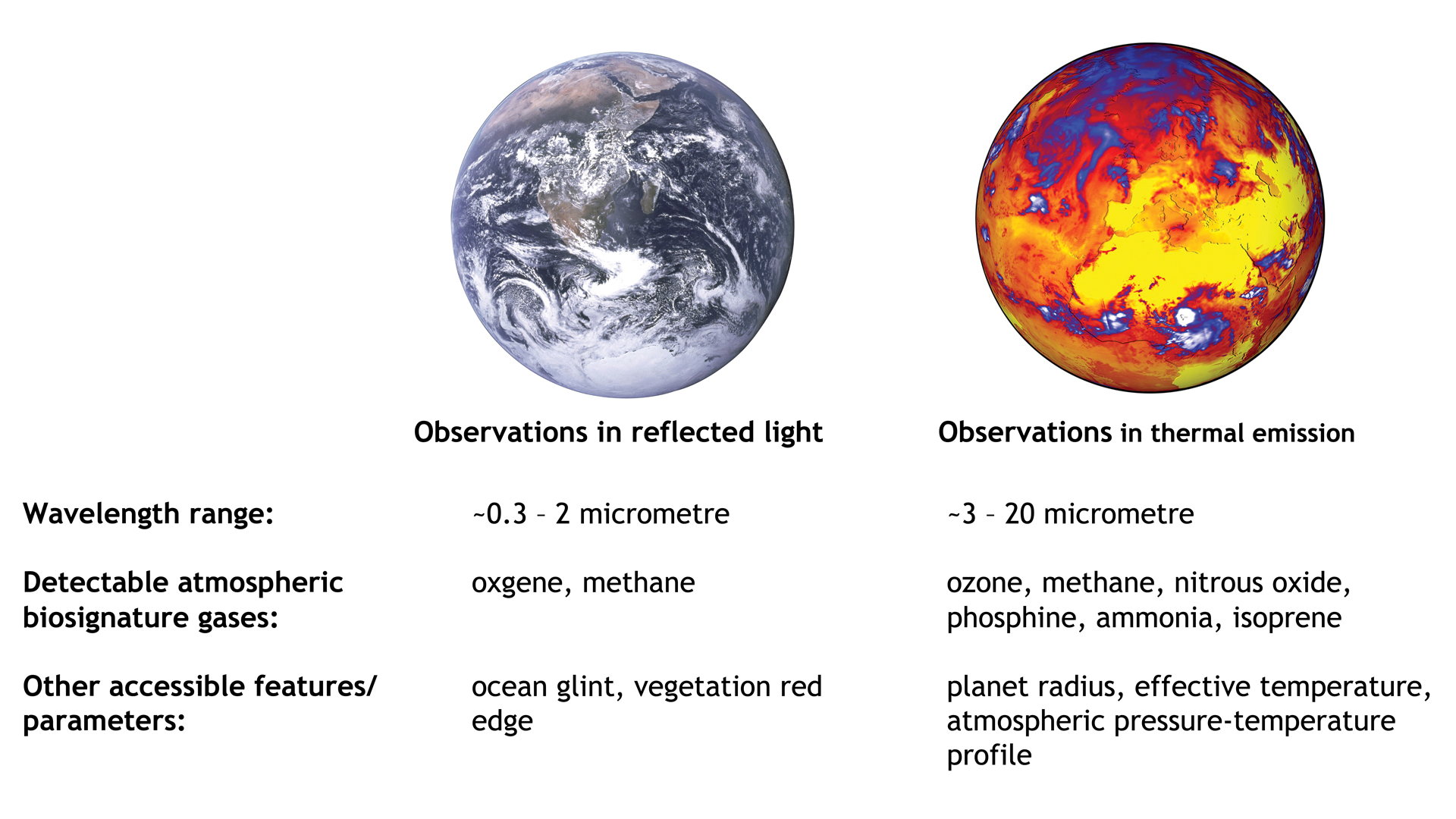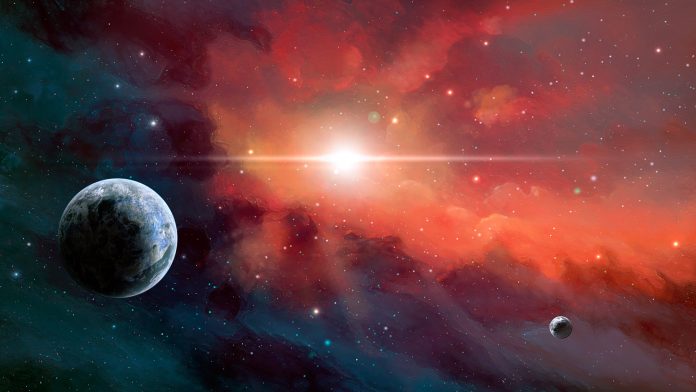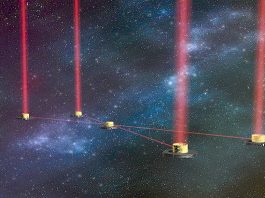ETH Zurich’s Professor Sascha P Quanz explores the future exoplanet missions that will search for life beyond our Solar System.
In June 2021, a senior committee advising the European Space Agency (ESA) on its planning of the Science Programme in the 2035-2050 timeframe identified the characterisation of temperate terrestrial exoplanets – planets similar to our Earth orbiting stars other than the Sun – as one of the top science priorities for a future L-class mission (the largest mission class there is within ESA). A primary motivation is to determine empirically the frequency of habitable planets with conditions that allow for liquid water to exist on their surface – a prerequisite for life, as we know it, to thrive. In addition, if designed properly, such a space mission can also identify so-called biosignatures in the exoplanets’ atmospheres, which could be a direct indication of extra-terrestrial biological activity. The LIFE initiative, which submitted the initial White Paper to ESA1, proposes to address these scientific questions by building a space-based nulling interferometer working at mid-infrared wavelengths, which would analyse the exoplanets’ intrinsic thermal emission.
In November 2021, the US National Academies published their consensus study report ‘Pathways to Discovery in Astronomy and Astrophysics for the 2020s’, identifying the most compelling science goals and presenting an ambitious programme of ground- and space-based activities for future investment. This report recommends the development of a large space-based UV / optical / near-infrared telescope with a 6m primary mirror as the next flagship class mission for the 2040s*. Also here, the primary motivation is the search for habitable, and potentially inhabited, exoplanets. However, instead of probing the exoplanets’ thermal emission, this NASA-led mission would detect and investigate exoplanets in reflected light, which is light from the host stars being back-reflected from the exoplanets.
Exoplanet missions: Complementarity, not competition
The large international astrophysics and space science communities have been strongly supporting both recommendations underpinning the general consensus that the search for life beyond the Solar System should be a priority for fundamental natural science in the 21st century. Whilst there is little doubt that NASA will indeed be tasked with the implementation of their reflected light flagship mission, the European counterpart is still competing with another science theme: a near-infrared follow-up to the ongoing Gaia mission. However, it must be realised that the possible combination of two large exoplanet missions, a NASA-led reflected light mission and an ESA-led thermal infrared mission, flying roughly at the same time, is a unique opportunity. This presents an opportunity to turn the search for life beyond the Solar System, a century-old question of humankind, from a vision into a scientific experiment. As with sending multiple rovers and spacecraft to our neighbouring planets, Mars and Venus, to derive an increasingly complete understanding of their formation and evolution, as routinely done by leading space agencies, the launch of two complementary and highly synergistic missions for the investigation of temperate terrestrial exoplanets is useful and scientifically motivated. These missions are not in competition, they complement and support each other.

The whole is greater than the sum of the parts
In fact, it may actually require the combination of data from both missions to provide the strongest empirical support that some worlds out there are similar to ours (see Fig. 1). Analysing terrestrial exoplanets at UV/optical/infrared wavelengths (~0.3 – 2.0 micrometre) in reflected light allows scientists to search for molecular oxygen, water, and methane in their atmospheres, as these molecules absorb light in parts of this wavelength range and hence leave an imprint in the reflectance spectrum. Oxygen and methane are of particular interest here as they can also be seen in Earth’s atmosphere and, because their origin is basically exclusively biological, they are considered important biosignatures. In addition, surface oceans or large areas of surface vegetation could be deciphered from reflected light data. Liquid water will lead to a strong peak in intensity for certain angles of reflection (the so-called ‘ocean glint effect’) and plants, as we know them on Earth, reflect not only green light effectively, but even more so light with wavelengths longer than 0.7 micrometre, leaving a strong and characteristic signature (the so-called ‘vegetation red edge’).
The thermal emission of an Earth-like exoplanet (~3 – 20 micrometre) contains even stronger absorption bands of atmospheric molecules of interest, including ozone (which is a direct by-product of molecular oxygen), water, and methane, as well as nitrous oxide, ammonia, phosphine, and isoprene. Whilst nitrous oxide is another biosignature in Earth’s atmosphere, ammonia, phosphine, and isoprene may be of biological origin in an atmospheric environment that is significantly different than that of Earth. In addition, measuring the intrinsic thermal emission of a terrestrial exoplanet gives direct access to its effective temperature and its radius – two key parameters of interest when assessing the potential habitability. Finally, the thermal emission encodes detailed information about the pressure-temperature profile of a planetary atmosphere – that is how these parameters change as a function of altitude. As such, it can also constrain the temperature and pressure on the object’s surface and help us understand if liquid water can be present.
Undoubtedly, both types of missions will be transformative for our understanding of exoplanetary environments. But, despite their unprecedented scale and sensitivity, most distant worlds will feature extremely faint signals that may pose a challenge for arriving at firm conclusions concerning the objects’ habitability and the unambiguous detection of biosignatures if data from only one mission are available. It is exactly in these cases where the complementarity of the characterisation methods pays off, significantly enhancing the diagnostic power.
Driven by science, not by politics
This will be crucial if we want to conduct a scientific experiment and test hypotheses concerning the frequency of habitable – or inhabited – worlds: finding strong empirical support for the existence of biological activity on an exoplanet will be a breakthrough result that could change our understanding of our place in the Universe forever. What if the first few temperate terrestrial exoplanets appear unhabitable? Is this bad luck or are habitable worlds rare? To address this question in a statistically robust manner, we need to assess at least 30-50 objects sufficiently well. Combining and leveraging the insights from both missions will prove extremely powerful in that context and significantly increase the confidence in our assessment in cases where data from a single mission alone would be ambiguous. For over half of its 4.5 billion years of evolution, Earth’s atmosphere has been displaying signs of biological activity in the form of atmospheric biosignature gases that were strong enough to be remotely detected out to a distance of 20 parsecs with missions such as those described above. Given our current understanding of exoplanet occurrence rates, we can expect to find at least 30-50 temperate terrestrial exoplanets within a radius of 20 parsecs from the Sun and, if none of them displayed conditions supportive to life, it would indeed be a very strong indication that life as we know it is rare in our cosmic neighbourhood.
It is indisputable that national and international space agencies operating with taxpayer money must make conscious and careful decisions on how and where to invest their funding. We have come a long way in detecting and learning about exoplanets over the last 25 years. Today, we have the knowledge and means to develop the technology for space missions that can search for signatures of life outside the Solar System. These missions should not be considered as the next mission within an individual agency’s programme. Implemented as a joint undertaking inspired by the same vision, these missions have the potential to revolutionise our understanding of life itself. Actively seeking collaborations between agencies, issuing invitations for international partnership, and taking a truly global perspective on the unique opportunity that lies in front of us waiting to be seized would allow humankind to empirically address, by the middle of this century, one of the most profound questions ever posed: are we alone in the Universe?
Further information and contact: www.life-space-mission.com
Follow LIFE at @LIFE_Telescope
*In terms of wavelength range, this mission is similar to the 2.4-m Hubble Space Telescope, but in terms of mirror size it is similar to the 6.5-m James Webb Space Telescope.
References
1 Quanz et al. 2021, doi:10.1007/s10686-021-09791-z
2 www.innovationnewsnetwork.com/searching-beyond-the-solar-system-for-life-on-exoplanets/11631/
3 www.innovationnewsnetwork.com/utilising-disruptive-technologies-detect-life-on-exoplanets/15322/
4 Schwieterman et al. 2018, 10.1089/ast.2017.1729
Please note, this article will also appear in the tenth edition of our quarterly publication.









